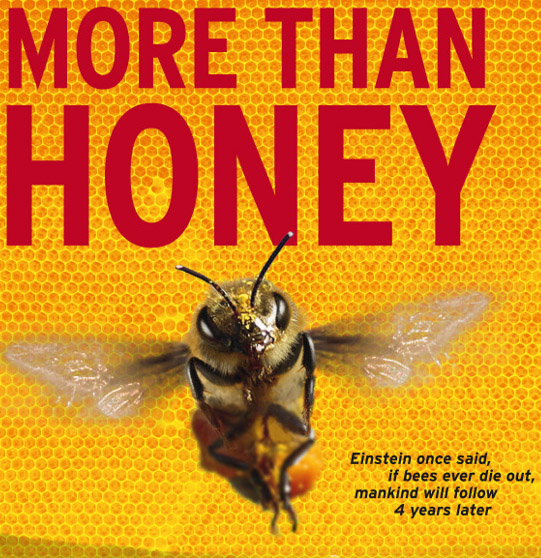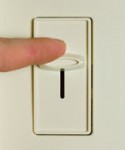 It is estimated that up to 95% of all flowering plants, 1/3 of food crops, and 1/2 of the world’s oils consumed by humans today rely on animals for pollination to assure reproduction. Over 180,000 plant species and more than 1200 crops require the services of these hard working, often unseen bio-contributors and out of every three bites of food we consume, one is there due to the efforts of pollinators.
It is estimated that up to 95% of all flowering plants, 1/3 of food crops, and 1/2 of the world’s oils consumed by humans today rely on animals for pollination to assure reproduction. Over 180,000 plant species and more than 1200 crops require the services of these hard working, often unseen bio-contributors and out of every three bites of food we consume, one is there due to the efforts of pollinators.
Considering California produces over 400 crops, grows almost half of the United States’ vegetables, fruits, and nuts, and is the nation’s top agricultural state the importance of pollinators, both for large operations and small, cannot be overstated!
Why is Pollen Important?
Pollen is essential to the reproductive system of most the world’s flowering plants and is distributed and transferred via a variety of animals (this essential genetic material is carried on their bodies) as they move from plant to plant. These industrious travelers not only provide a vital service with regards to the food we eat and flowers we enjoy but also play a role in sustaining bio-diversity and promoting vibrant and vigorous ecosystems worldwide, not to mention in the backyard flower garden.
What Animals Pollinate?
Pollinators are a varied and interesting lot and fall into three primary categories:
- Birds (for flowers only:) hummingbirds, robins, honeycreepers, honeyeaters, spiderhunters, sunbirds, cedar waxwings, cardinals, grosbeaks, doves and more
- Insects: butterflies, numerous flies, wasps, moths, beetles and especially bees (native and domesticated honey bees and the numerous bumblebees are some the most important and easily recognizable of the group)
- Mammals: bats, rodents, possums, and other ground dwellers
What Plants and Flowers Attract Pollinators?
Gardens grown at home attract many pollinators and planting the proper species is integral to assure that they return throughout the growing season, year after year. Therefore, providing a wide array of plants that produce a succession of blooms and thus the vital pollen and nectar needed to promote reproduction is key. In turn, this diversity in plants is likely to attract diversity in pollinators.
For those growers who engage in community gardening planting pollinator attractors near garden plots will assure ample and near-constant visits by pollinators and most certainly increase yields and with larger and tastier crops to boot!
It has been suggested that native pollinators have a penchant for plants native to their locale though garden plants purchased at a nursery also seem to do well. When choosing plants, be they native or garden-variety, it is good policy to:
- Include flowers of varying shapes and sizes
- Include several colors of flowers, including blue, purple, violet, red, orange, yellow and white
- Plant flowers in clumps, as clusters tend to attract more than scattered, individual plants
- Plant numerous flower species that will flower all at once and throughout the spring, summer and fall
Native and Garden Plants and Flowers
While the species one chooses for their garden will likely vary depending on region, climate, etc. the following is a far from exhaustive, general list of native and garden-variety plants that are pollinator-friendly, will grow in numerous environments and add beauty to the garden. They can also be inter-mixed to allow for maximum diversity.
Native:
- Aster Aster
- Black-eyed Susan Rudbeckia
- Goldenrod Solidago
- Huckleberry Vaccinium
- Lupine Lupinus
- Penstemon Penstemon
- Purple Coneflower Echinacea
- Rhododendron Rhododendron
- Sage Salvia
- Sunflower Helianthus
- Wild Lilac Ceanothus
Garden:
- Basil Ocimum
- Bee Balm Monardia
- Butterfly Bush Buddleja davidii
- English Lavender Lavandula
- Globe Thistle Echinops
- Hyssop Hyssopus
- Peruvian Lily Alstroemeria
- Red Hot Poker Kniphofia
- Rosemary Rosmarinus
- Sweet Alyssum Lobularia maritima
- Wallflower Erysimum
Avoid Pesticides
After planting a broad range of plants and flowers it is important to do everything possible to assure that they thrive in their new home. This includes following watering guidelines, feeding with organic mulch and avoiding pesticides when at all possible.
Most pesticides, including many deemed “organic,” are toxic to bees and other organisms that may prove beneficial to the garden, not to mention the humans, pets, and wildlife that also enjoy the garden space. If indeed the choice is made to use pesticides use them with care and discretion. To protect the very pollinators the plants are meant to attract do not apply pesticides when they are present or on blossoms that are open.
Pollinators in Trouble—Let’s Do Our Part
Planting a pollinator-friendly garden may actually go beyond the basic need for a place to enjoy the tranquil beauty of the outdoors or to showcase the fruits of a gardener’s labor. The habitat and food sources provided pollinators by home gardeners, even when located in urban environments or those removed from wilder areas may play a wider role in sustaining these important implements of Mother Nature for years to come.
The loss of critical habitat, human introduced blight and disease, pollution, and pesticide poisoning are responsible for drastic declines in bee, butterfly and other pollinator populations across the globe. Thus, by creating these garden spaces with pollinators in mind gardeners can take an active role in seeing to it that the essential and critical process of pollination continues.
AUTHOR: Daniel Novak is a lover of gardening and planting, art and design, cooking and spending time in his backyard oasis. He is currently a freelance writer for the indoor, outdoor and decorative plant stand site Avant Garden Décor. In his free time, he enjoys attending garden shows and farmer’s markets, wildlife viewing and watching baseball.
 Are you an Economizer, Idealist or Eco-Chic?
Are you an Economizer, Idealist or Eco-Chic? 3 Green Lighting Tips Beyond the Obvious
3 Green Lighting Tips Beyond the Obvious Frank Schiavo Solar Home’s Legacy to San Jose
Frank Schiavo Solar Home’s Legacy to San Jose